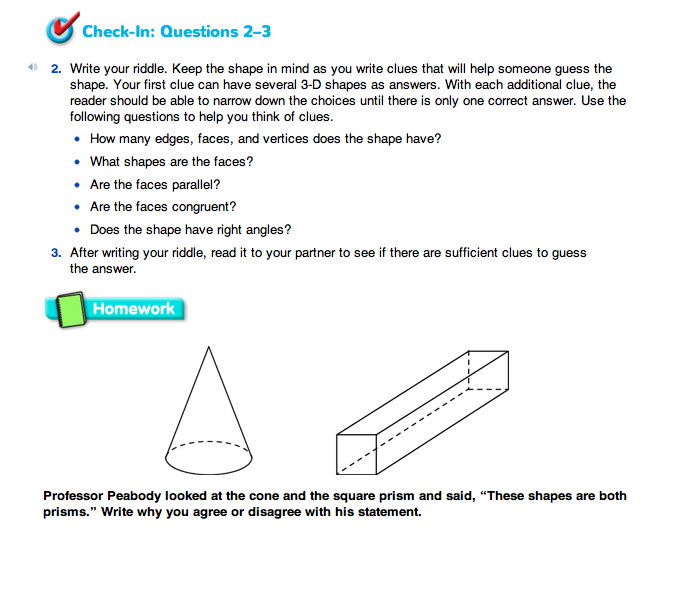Sorting 3-D Shapes
Est. Class Sessions: 2–3Developing the Lesson
Part 2. Writing Geometry Riddles
Have students read the Writing Geometry Riddles section in the Student Guide and use the display of the Shape Finder chart to review what they learned about 3-D shapes. Display the riddle you prepared and ask students to determine which 3-D shape fits the clues.
Select a three-dimensional shape from the set of Power Solids® and show it to the class. Sample Dialog 2 is an example of a class discussion about a cube.
Use Check-In: Question 2 in the Writing Geometry Riddles section in the Student Guide to guide students as they write their riddles on paper. Emphasize that the clues should pertain only to the geometric properties of the object and not to attributes such as color, size, or material. Have students write their riddles on scratch paper. Place the 2 sets of Power Solids® on a table for students who need to look at the three-dimensional objects rather than the two-dimensional pictures to confirm that their clues fit the riddles.
After they finish their first draft of the riddle, Check-In: Question 3, asks students to read their riddle to a partner. Partners will listen to the riddles to see if there are sufficient clues to guess the riddle. If students are having difficulty thinking of clues, remind them to refer to the questions in Question 2.
When students are satisfied that their riddles have sufficient clues, demonstrate to students how you displayed your sample geometry riddle. Give each student a folded sheet of paper and have them write the clues on the outside of the paper and glue a picture of the three-dimensional shape on the inside from the 3-D Shape Sort Cards page.














